
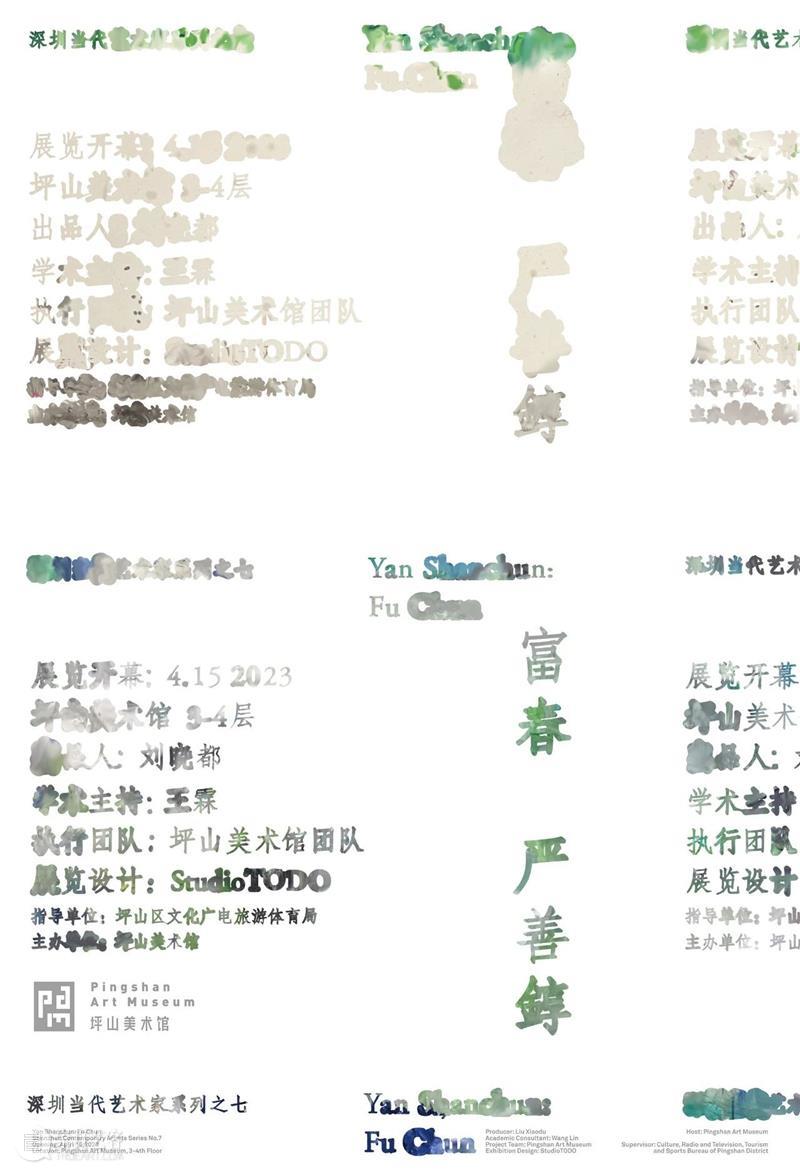
严善錞:富春
坪山美术馆|深圳当代艺术家系列之七
出品人:刘晓都
学术主持:王霖
开展时间:2023年4月15日(周六)
地点:坪山美术馆3-4层
指导单位:坪山区文化广电旅游体育局
主办单位:坪山美术馆
执行团队:坪山美术馆团队
展览设计:StudioTODO
展务执行:深圳市汇峰建设装饰工程有限公司
特别鸣谢:摩天轮画廊、Kenna Xu画廊
前言
作为地名的“富春”,其渊源可以追溯至《汉书》。历经时代变迁,它所指涉的地理范围也有所变化,但约定俗成的区域多是指浙江的桐庐与富阳一带。中古以来,“富春”还成为一个景观意象,被文士们引入诗歌或游记,以代表江南某处独特的地理空间——有青山,也有秀水,却既不是水乡,也不算山区;既是通都大邑的往来要道,又是隐者屏绝尘俗的栖居之地。当然,今天的“富春”之所以出名,更因为元代黄公望的《富春山居图》那充满传奇的递藏故事。这件被奉为中国画经典的名作,实际上代表着中国文人的审美精神与所追寻的内在价值的最高标准,有对渔隐及山居生活的向往,也有对“写生”这一概念的内在诠释。
源自西方绘画的“写生”观念,虽不同于主观的创作,却同样能反映出画家的内心世界,尤其是他们看待世界的眼光。因此,“写生”的作品非但不是自然主义的,而且从它们完成的那一刻起,往往就已宣告了其独立于客观世界的生命。例如山、水、树、石等自然景观随着季节与时间而变幻,在艺术家的笔下形成基础形象,又因情感、思想等精神方面的表达而呈现出万千意象。在本次展览中,当代艺术家严善錞所呈现的,正是他一次次与“富春”沉浸式的接触后,所唤醒的对艺术的直觉和情感。年少时在此农耕的生活经历,让严善錞并不像古代文士那样,以“他者”的眼光去看待这里的山山水水。近年来他多次重回“富春”,研究山川的峻奇雄伟、河岸的蜿蜒曲折,一方面与黄公望耗时多年创作《富春山居图》的经历相似,另一方面又与塞尚反复描绘圣维克多山异曲同工。正是在写生中,严善錞不断探索着当代艺术在创作语言上的更多可能性,也持续将观察到的视觉元素运用于画作,在与自然的交流中表达自己在感性与形式结构上的趣味。在坪山美术馆,观众将跟随这位艺术家的作品,走过“富春”的春夏秋冬,看遍“富春”的暮色,也将在当代艺术的“山水”间,感受静谧的永恒生命力。

关于艺术家
严善錞
1957年生于浙江杭州,中国美术学院版画系学士、史论系博士,1993年从湖北省美术院调入深圳画院,曾任深圳画院研究员及副院长。现生活于深圳、杭州。
严善錞多年来潜心于艺术理论研究与创作实践,尤其在中国的文人画与西方的抽象画方面别有会心,他将多种绘画语言进行融合发展,不断推演它们在视觉方面的可塑性。其创作以蚀刻铜版画与综合材料两种媒材来表現对故乡杭州西湖及富春江山水的追忆和感受,画风简约高华、寄意深远,开创了自己独特的表达方式和艺术风格,具有醇厚的历史魅力和前瞻动力。其作品先后为美国大都会博物馆、洛杉矶郡立美术馆、中国美术学院美术馆、OCAT艺术中心等重要的海内外美术机构收藏展出。其专著有:《当代艺术问题》《文人画的趣味、图式与价值》(与黄专合著)《文人与画——正史与小说中的画家》等。
学术主持
王霖
1969年出生于浙江建德。高中毕业后自学中国画,并钻研中国先秦学术和古典文学,撰有《耕心庐论词笔札》《耕心謣录》《夕山小集》等文言著述若干种。2000年,作为艺术史学者范景中教授的助手,受聘于南京师范大学美术学院,从事中国美术史论的研究和教学工作。2001-2003年,入杭州佛学院学习梵语和佛学。2002年,在学者吴熊和、孔仲起、章祖安、吴山明、范景中、许江、曹意强等十多位专家的积极推动下,以讲师身份正式入职中国美术学院艺术人文学院,讲授中国先秦学术及艺术史。2007年,由著名学者季羡林、汤一介、王元化等向教育部联名推荐,王霖获准以高中学历攻读博士研究生。现为中国美术学院视觉中国研究院研究员,美术学博士,“中国绘画史研究”及“中国佛教美术研究”方向研究生导师,博士后合作导师。王霖长期从事中国古典学术研究,对中国思想史和中国文学理论、中国画论有深入考察。近十余年来,在中印佛学史和佛教美术领域也有研讨。撰成《先秦学术通论》《画学丛证条辨》《恽南田年谱》《神格与世相:早期中国罗汉信仰及图像研究》《觉堂读书志》等著作若干种,在各类学术刊物发表论文数十篇。

关于坪山美术馆
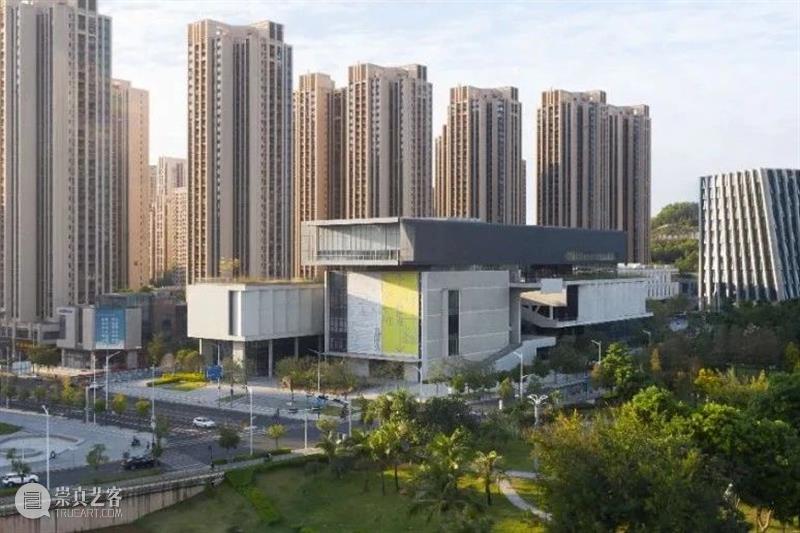
坪山美术馆位于坪山文化聚落北区,是深圳重要的公共文化设施。坪山美术馆以创新的体制机制,推动传统公立美术馆与民间美术馆的资源融通,汇聚各方能量,办一个专业化、品质化、国际化的“正而酷”的美术馆,成为集活力、包容、创意、互动为一体的新时代新都市美术馆新标杆,为市民群众带来新鲜、多元的文化享受和体验。

坪山美术馆|深圳当代艺术家系列总序
历史的进入与深耕
深圳当代艺术的发展最早可以溯源至85新潮时期,当时深圳作为一个新兴的、充满想象张力的城市,催生和兴起了一些零星的艺术行动和个体实践,但其时,深圳的使命还是在于经济和政治领域的试验与奇迹创造,文化艺术的发展处于“萌而未发”的状态。
直至1997年,深圳同一年建设和开放了何香凝美术馆和关山月美术馆,深圳的当代艺术由此呈现出了日渐明朗的学术定位和版块性的崛起和活力。而2005年,由黄专先生参与发起的OCAT在深圳正式成立,标志着深圳当代艺术的主体意识的觉醒,可以说中国当代艺术的深圳立场和独立工作,助推了中国当代艺术的学术梳理和价值建构。深圳的当代艺术在这个阶段,也经历了空降式和事件型艺术的兴奋期,涌现出了数目惊人的双年展。客观而言,这一系列实践松动和培育了深圳当代艺术的土壤,也推动和塑造了今天的深圳当代艺术发展的基本面貌。
坪山美术馆的成立,便是在此背景下的应时而生和顺势而为。在过去两年多的工作中,我们始终强调以历史的眼光、当代的支点和审慎的判断来介入当代艺术的现场和地方艺术的建设,此次推出的深圳艺术家个案系列,也是基于深圳当代艺术的现实情境和发展阶段,期望以激发、助力和沉淀的行动推动深圳当代艺术的主体建构。我们希望通过个案的梳理来呈现深圳当代艺术的结构与肌理,肌理越饱满,城市也会更有精神的厚度和潜能。
深圳当代艺术呈现出个体迁徙、频繁流动的状态,我们对“深圳当代艺术家”的界定也因应这种特质。他们中既有深耕二三十年的艺术家梁铨、周力,也有在深圳开启其艺术的重要岁月后又北上的蒋志,还有新生代的80后艺术家李燎;既有近几年离开学院迁徙到深圳的薛峰,也有处于候鸟状态、将深圳作为“落脚城市”的沈少民。我们都将他们纳入到深圳当代艺术家的范畴进行考察、梳理和展览呈现。我们当然深知其判断本身一方面会推动地方艺术生态的基础建设,同时也意味着这个工作会充满挑战和艰辛。但我们坚信,发展到今天的深圳当代艺术,亟需对自己过去短暂而丰富的历史进行回顾、梳理和审视,并对此时此地的现场形成观察和判断。深圳当代艺术要继续靠前走,就需要有一些自我的审视和冒险。
记得已故的深圳当代艺术的重要推动者、艺术评论家黄专说过一句话:“不是什么时代都能进入历史,只有那些真正改变了我们的生活价值的时代才能进入历史;不是任何人都能进入历史,只有那些真正具有创造能力的人才能进入历史。” 坪山美术馆就是在寻找那些“改变”和“创造”,并将其编织到当代艺术的深圳叙事之中,我们希望以此为深圳、为中国南方当代艺术生态搭建出一些牢固和有时间重量感的“基础设施”。
坪山美术馆馆长 刘晓都
深圳当代艺术家系列读本策划 钟刚

Preface
The origin of "Fuchun" as a place name traces back to the Book of History. Although the geographical area it refers to has varied throughout time, in general, it covers the areas around Tonglu and Fuyang in Zhejiang Province. Since the Han Dynasty, "Fuchun" has also become a natural imagery, introduced by literati into poems or travelogues to represent a unique geographical space of Jiangnan - its lush hills and gentle waters are found neither in a water town nor a mountainous area. Meanwhile, it served as a major route to and from the capital city where recluse lived in isolation from the mundane life. Of course, “Fuchun” gained its notoriety from the legendary provenance of Yuan Dynasty painter, Huang Gongwang’s Dwelling in the Fuchun Mountains. This masterpiece, regarded as a classic of Chinese painting, embodies the aesthetic spirit of the Chinese literati and the ultimate values they pursued, who aspired to a life in seclusion like fishermen and mountain dwellers, and internalized interpretation of “en-plein-air drawing."
Although the concept of "en-plein-air drawing" originated from Western painting and is different from subjective creativity, it nevertheless projects the painters’ inherent nature, especially their perception of the world. Therefore, "en-plein-air drawings" are not naturalistic depictions; in fact, from the moment they are completed, they often declare independence from the objective world. For example, mountains, water, trees, rocks, and other natural landscapes transform with the seasons and time, forming the basic image under the artist's brush, which are then rendered into myriads of imageries with the artist's perceptual, intellectual, and spiritual interpretations. In this exhibition, contemporary artist Yan Shanchun presents intuitive and sensible artistic expressions, awakened from his immersive encounters with "Fuchun" on multiple occasions. His farming experience in this area as a young man led him to view the mountains and waters from a perspective other than those of the ancient literati. In recent years, he revisited Fuchun several times to study its majestic mountains and winding river banks, a practice that is similar to Huang Gongwang's years-long experience in creating Dwelling in the Fuchun Mountains on the one hand, while mirroring Cézanne's repeated depictions of Mont Ste. Victoire on the other. Through "en-plein-air drawings," Yan Shanchun continues to explore the possibilities of the contemporary art lexicon and applies the visual elements he observes to his paintings, conveying his interests in sensibility and formal structures through conversations with nature. At the Pingshan Art Museum, visitors will follow the artist's works through the four seasons of "Fuchun," from dawn to dusk, and between the "landscapes" of contemporary art, as they tune in with the serenity of eternal life force.

Artist|Yan Shanchun
Yan Shanchun, born in 1957 in Hangzhou, Zhejiang Province, holds a bachelor's degree in printmaking and a doctorate in art history and theory from the China Academy of Art. He is currently living in Shenzhen and Hangzhou.
Yan Shanchun has been dedicated to studying art theory and creative practice over the years, especially in Chinese literati painting and Western abstraction. He integrates various painterly languages, playing out their visual plasticity. His art practice adopts copper plate engraving and mixed media to express his memories and feelings about the West Lake in his hometown Hangzhou, and the landscapes around the Fuchun River. With a minimal and sophisticated style and profound metaphorical meanings, Yan invents a unique expression and artistic style that are rich in historical appeal and forward-looking dynamics. His works have been acquired and exhibited by the Metropolitan Museum of Art, the Los Angeles County Museum of Art, the Art Museum of the China Academy of Art, and the OCAT Art Terminal, among many art institutions at home and abroad. His publications include Issues on Contemporary Art, Taste, Motifs and Value of Literati Painting (both co-authored with Huang Zhuan) and Literati and Painting - Painters in Official History and Literature.
Academic Consultant|Wang Lin
Wang Lin was born in Jiande, Zhejiang Province in 1969. Self-studied Chinese painting after graduating from high school, he had then studied the pre-Qin academic and classical Chinese literature, and composed of several books in classical Chinese, such as Notes on poetry criticism by Gengxinlu, Gengxinyulu, and A short collection of writings by Xishan. In 2000, as an assistant of art historian Professor Fan Jingzhong, he was employed by School of Fine Arts, Nanjing Normal University, engaged in the research and teaching of Chinese art history theory. From 2001 to 2003, Wang Lin studied Sanskrit and Buddhist thought at Hangzhou Buddhist Institute. In 2002, under the active promotion of scholars Wu Xionghe, Kong Zhongqi, Zhang Zu’an, Wu Shanming, Fan Jingzhong, Xu Jiang, Cao Yiqiang and more than 10 other experts, he officially joined the School of Art and Humanities of China Academy of Art as a lecturer, teaching Chinese Pre-Qin academic and art history. In 2007, Ji Xianlin, Tang Yijie, Wang Yuanhua and other famous scholars jointly recommended him to the Ministry of Education, and Wang Lin was allowed to pursue doctoral studies with a high school diploma. Currently, he is a researcher of Visual China Research Institute of China Academy of Art, Doctor of Fine Arts, postgraduate supervisor and postdoctoral co-supervisor in the direction of "Research on the History of Chinese Painting" and "Research on Chinese Buddhist Art". Wang Lin has been engaged in Chinese classical academic research for a long time, and has in-depth investigation of Chinese ideological history, Chinese literary theory and Chinese painting theory. In the past ten years, he has also conducted research in the field of Buddhist history and art in China and India. He has composed several works, such as General Academic Theory of Pre-Qin Dynasty, Huaxue congzheng tiaobian, Yun Nantian Chronology, Godhead and Secular appearance: A Study on the Beliefs and Images of the Luohan in Early China, and Juetang Reading Notes, etc, and has published dozens of papers in various academic journals.

About PAM
Situated in the north district of Pingshan Culture Quarter, The Pingshan Art Museum (PAM) is an important public cultural institution in Shenzhen. It is a major force for resource fusion from conventional public art museums and private art institutions, fueled by its institutional innovation. Aiming to build an art museum that is “positive and cool”, PAM actively explores professional development with high-quality in an international scope. The Pingshan Art Museum dedicates to be a new landmark in our time by bringing fresh and diverse cultural enjoyment and experiences to its citizens and celebrating vitality, inclusion, creativity, and interaction.

Shenzhen Contemporary Artists Series |
Prelude | Making History and Making Endeavors
The development of contemporary art in Shenzhen can be traced back to as early as 85 New Wave period. At that time, as a burgeoning and imaginative city, Shenzhen gave birth to some sporadic art movements and individual practices. However, Shenzhen then was obligated to undertake the mission of conducting experiments and thereby working miracles in the economic and political fields. As a result, culture and art were emerging, with dramatic growth yet to come.
Until 1997, Shenzhen witnessed the building and opening of He Xiangning Art Museum and Guan Shanyue Art Museum in the same year. Contemporary art in Shenzhen has shown an increasingly clear academic positioning, while demonstrating the rise and vitality of Pearl River Delta in the contemporary art context. In 2005, OCAT, initiated by Huang Zhuan among others, was formally established in Shenzhen, marking the awakening of the subjective consciousness of contemporary art in Shenzhen. It can be concluded that Shenzhen position and its independent efforts concerning Chinese contemporary art have helped facilitate the academic research and value construction of Chinese contemporary art. At this stage, the contemporary art in Shenzhen has also witnessed the sprouting of non-indigenous and events-based art when a surprising number of biennales came out. Objectively speaking, the series of practices loosened and cultivated the soil for contemporary art in Shenzhen, while promoting and shaping the basic appearance of the development of contemporary art in Shenzhen today.
Against this backdrop, Pingshan Art Museum was established as the times demanded. Over the past two years of work, we have been emphasizing historical perspectives, contemporary pivots and prudent judgment, which should play a role in the construction of contemporary art scenes and local art. Based on the realistic situation and development stage of contemporary art in Shenzhen, the Shenzhen Contemporary Artists Series is expected to promote the major construction of contemporary art in Shenzhen by means of inspiring, assisting and inheriting acts. We hope to present the structure and texture of Shenzhen contemporary art through the analysis of individual cases. The richer the texture, the greater intellectual thickness and potential the city will have.
The contemporary art in Shenzhen presents a state of individual migration and frequent movement, which prompts the definition of "Shenzhen Contemporary Artists". Among them are the artists Liang Quan and Zhou Li who have been involved into the field for 20 or 30 years, Jiang Zhi who went north after the momentous years of starting out a career as an artist in Shenzhen, as well as Li Liao born in 1980s. Besides, the said artists also include Xue Feng who has left school and moved to Shenzhen, and Shen Shaomin, who treats Shenzhen as a temporary place of lodging like a migratory bird. We categorize them as Shenzhen contemporary artists for inspection, sorting and exhibiting. Certainly, we are aware that the judgment itself will promote the infrastructure construction of the local art ecology on the one hand, which also means that this work will be full of challenges and hardships. However, we firmly believe that the shenzhen contemporary art today needs to be reviewed, sorted out and examined concerning its short yet rich history, thus resulting in observations of and judgments on the scene here and now. Should the contemporary art in Shenzhen advance, it needs some self-examination and adventure.
I recall that the late Huang Zhuan, an important promoter of contemporary art in Shenzhen and an art critic, said: "Not all times can go down in history. Only those times that have truly changed the value of our lives can make history; not everyone can go down in history. Only those who are genuinely able to produce creations can pass into history.” Pingshan Art Museum is looking for those “changes” and “creations”, while weaving them into the narrative of Shenzhen contemporary art. We hope to build some solid and time-honored “infrastructure" for Shenzhen and for the contemporary art ecology in southern China.
Liu Xiaodu, Director of Pingshan Art Museum
Zhong Gang, Planner of Readers of Shenzhen Contemporary Artists Series

正在展出
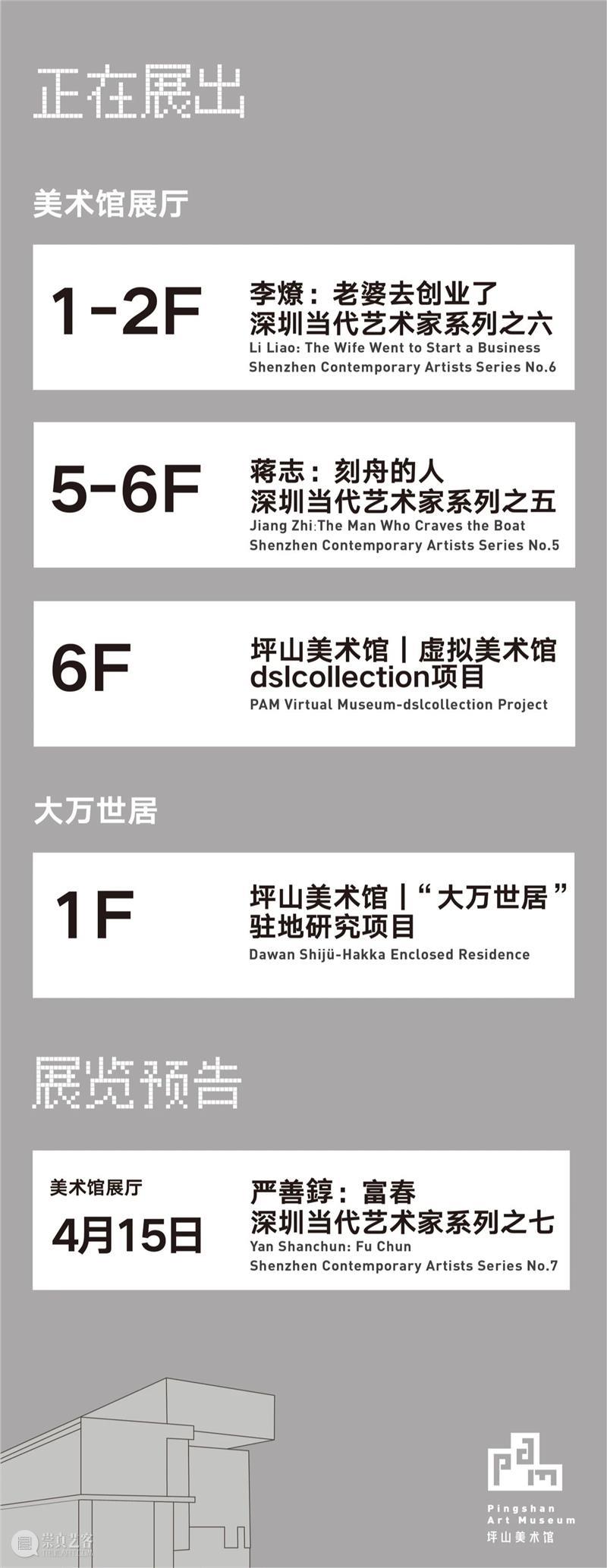

编辑|骆昱彤
审校|刘晓都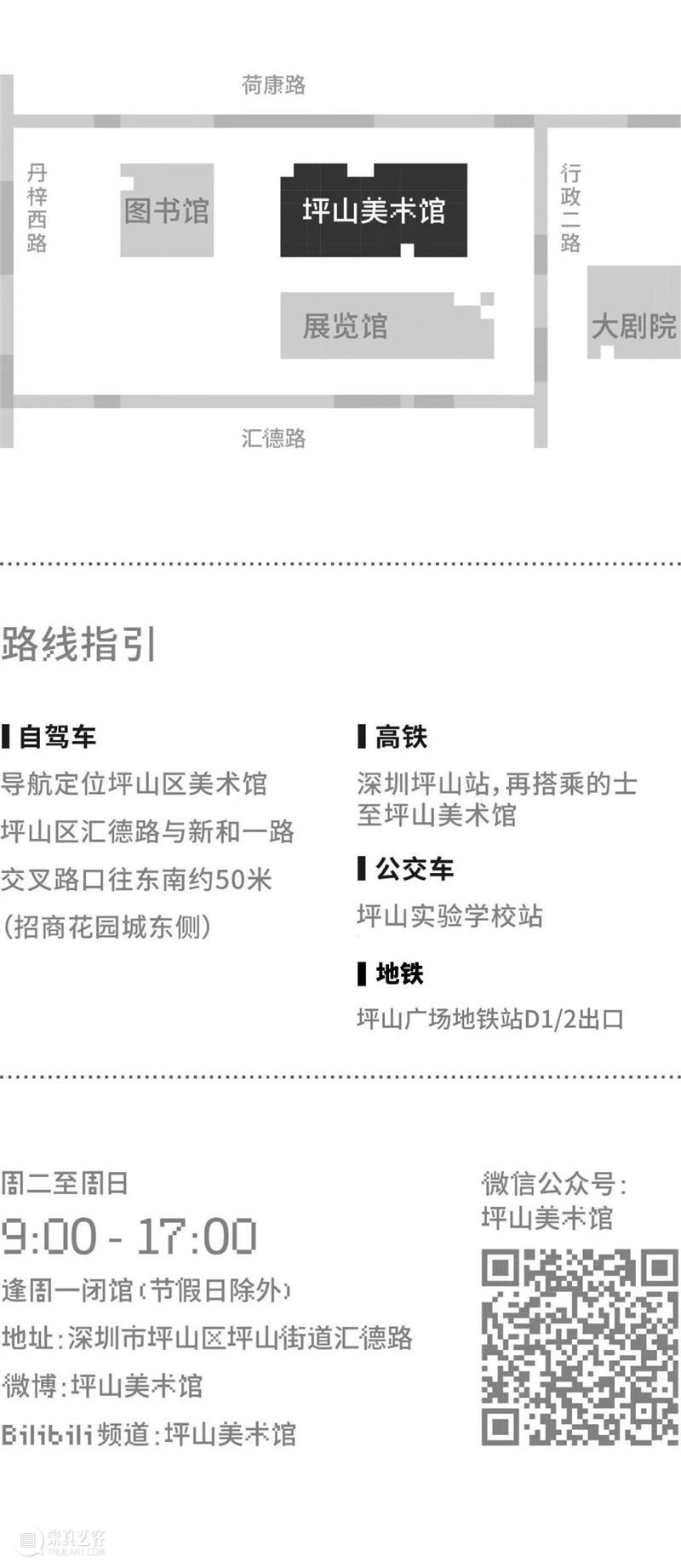


已展示全部
更多功能等你开启...
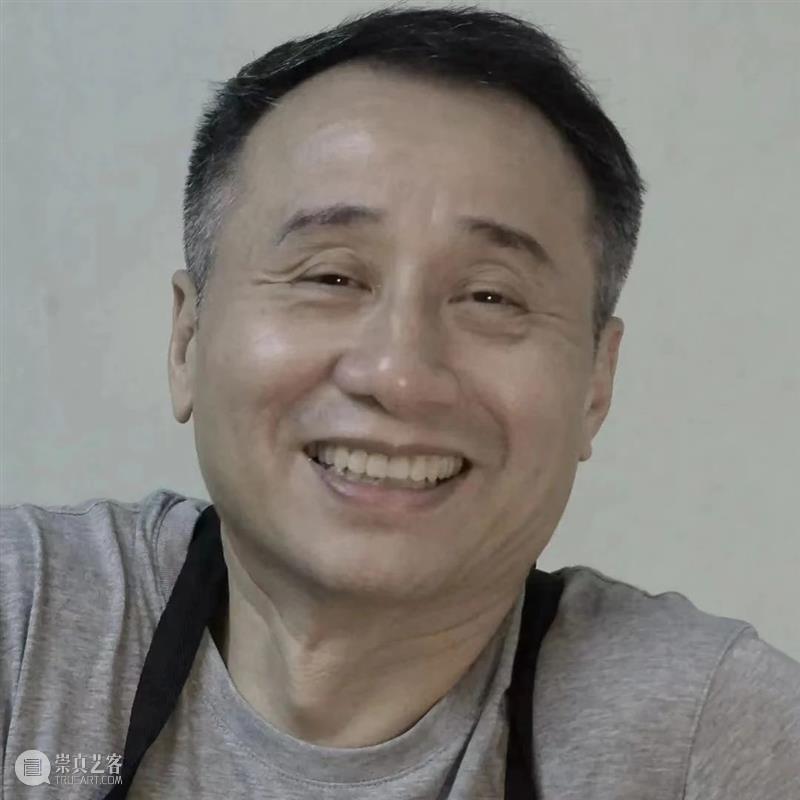
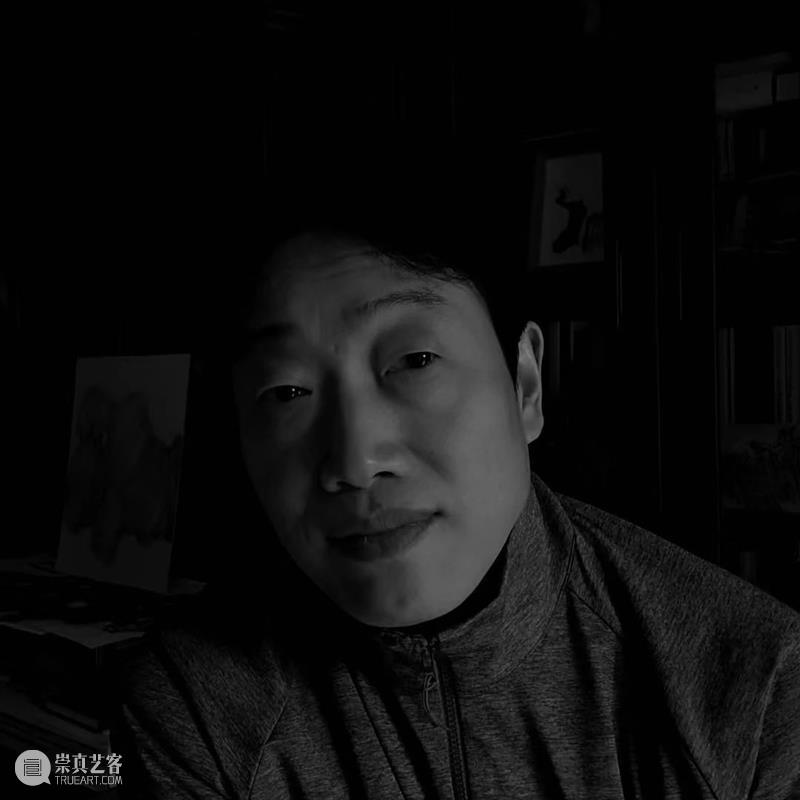





 分享
分享